A beam is a structural element or member that largely transfers loads placed along its axis to its supports, such as walls, columns, foundations, and so on, with bending being the primary way of deflection.
Various types of beams are employed in the construction of buildings and structures. Vertical loads, shear stresses, and bending moments can all be absorbed by these horizontal structural members. Beams distributed loads throughout their length to their terminals, including walls, columns, foundations, and other structures.
Types of Beams in Constructions:
The types of beams used in construction are as follows:
A. Based on Construction Materials:
1. Timber Beam:
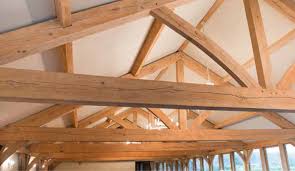
Fig 1: Timber Beam
Courtesy: vestern.co.uk
On the wooden truss, the timber beam travels horizontally between two posts. The timber beam is commonly utilized in the building of wooden roof trusses. A timber frame structure is used with columns and posts to support beams.
They’re also utilized to support floor slabs in historic timber-framed dwellings. If treated and cared for properly, timber is a sturdy and long-lasting building material.
2. Reinforced Concrete Beam:
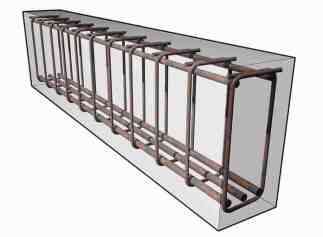
Fig 2: Reinforced Concrete Beam
Courtesy: researchgate.net
Plain cement concrete and reinforcement bars make up a Reinforced Concrete Beam. It is the most frequent type of beam used in building construction. This sort of beam can be seen in many residences.
3. Steel Beam:
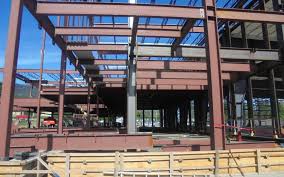
Fig 3: Steel Beam
Courtesy: structure1.net
Steel beams are utilized in warehouses, towers, industrial buildings, and trusses, among other steel constructions. Steel I-beams are often employed because they have high second moments of area, which means they are stiff concerning their cross-sectional area and can handle a large load without sagging.
4. Composite Beam:
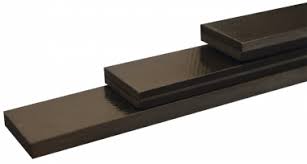
Fig 4: Composite Beam
Courtesy: tecquipment.com
It’s a structural component built from two different materials linked together to form a single unit. Steel and concrete composite beams, for example, are utilized in building construction. A broad steel flange is used to secure this concrete slab.
B.Based on Support Conditions:
5. Simply Supported Beam:

Fig 5: Simply Supported Beam
Courtesy: sciencedirect.com
It is one of the most basic structural elements because both ends are supported, but it can rotate freely. There are pinned support at one end, and at the other, there is roller support. It can withstand shearing and bend depending on the strain.
6. Cantilever Beam:
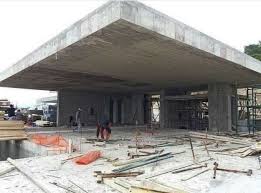
Fig 6: Cantilever Beam
Courtesy: quantity-takeoff.com
A cantilever beam is defined as a fastened beam at one end and set to be free at the other. The load is distributed back to the support, subjected to moment and shear stress. Bay windows, balconies, and some bridges are all possible using cantilever beams.
7. Fixed Beam:
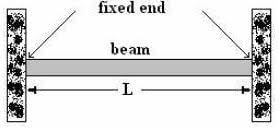
Fig 7: Fixed Beam
Courtesy: theconstructor.org
This type of beam has fixed ends on both ends. In addition, the fixed beam’s rotating movement is controlled. The fixed beam’s end cannot be rotated because it is fixed at both ends. The fixed beam is positioned to withstand high pressure. There is no reaction from this type of beam. It is employed in the construction of high-rise buildings and industrial structures.
8. Overhanging Beam:
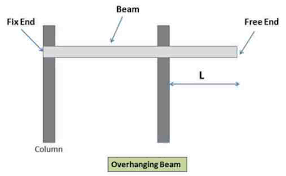
Fig 8: Overhanging Beam
Courtesy: civiconcept.com
A simple supporting beam-like structure is commonly used for this sort of beam. In an overhanging beam, however, one end extends beyond the support. The beam is often delivered at each end of the column to transfer the load. A column supports one end of an overhanging beam, while the other is overhung away from the support. In residential buildings, overhanging beams are typically employed to create shade or balconies. Both ends of the Double Overhanging Beam overhang somewhat away from the support.
9. Continuous Beam:
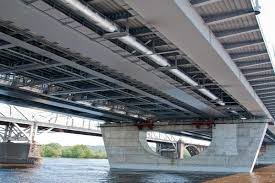
Fig 9: Continuous Beam
Courtesy: engineersforum.com.org
A continuous beam contains more than two or more supports. It’s similar to a supported beam. When a beam is maintained at both ends with intermediate support, it is referred to as a continuous beam. There are multiple spans in these types of beams. In bridge construction, a continuous beam is most usually employed. This sort of beam has more than two supports running its length.
10. Trussed Beam:
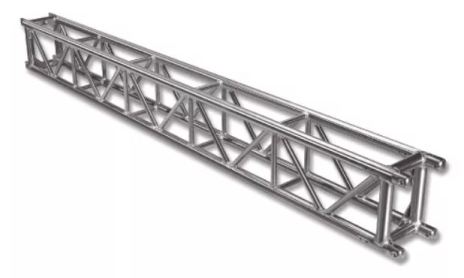
Fig 10: Trussed Beam
Courtesy: civiconcept.com
A truss has reinforced a trussed beam. These beams are commonly utilized to construct workshop sheds and warehouse sheds where a long span and open space are required.
C. Based on Shape Of Cross Section:
11. Rectangular Beam:
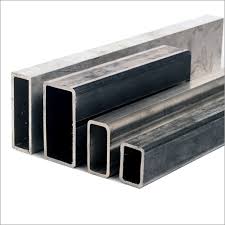
Fig 11: Rectangular Beam
Courtesy: drintl.co.in
The cross-section of the rectangular beam endures tension at the bottom and compression at the top. As a result, the bottom of the beam’s cross-section receives more reinforcement than the top. Rectangular beams are the most prevalent type of building beam.
12. T-section Beam:
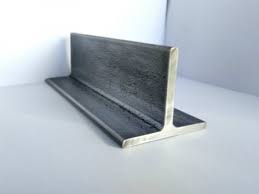
Fig 12: T-section Beam
Courtesy: drintl.co.in
Most of the time, this beam is built monolithically with a reinforced concrete slab. Isolated T-beams are sometimes used to boost the compression strength of concrete.
13. I -section Beam:
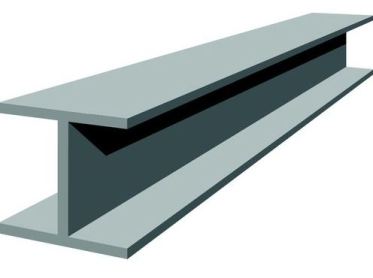
Fig 13: I-section Beam
Courtesy: civiconcept.com
In the construction of steel constructions, I beams are used. In steel structures, I beams can safely withstand deflection and bending forces. I section beams are manufactured according to factory specifications. In architecture, the I beam section is employed in crucial support trusses. With greater strength than other beam sections, the I beam protects the structure’s integrity more than other beam sections.
14. L-section Beam:
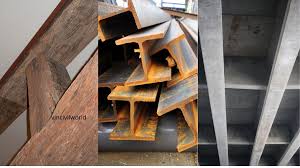
Fig 14: L-section Beam
Courtesy: civiconcept.com
L-Beam is a type of beam used at the corner or around the perimeter of a slab.
15. C-section Beam:
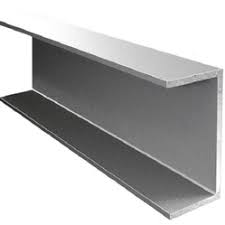
Fig 15: C-section Beam
Courtesy: exportersindia.com
It’s a beam with a channel part, often known as a “C” section.
D.Based on Geometry:
16. Straight Beam:
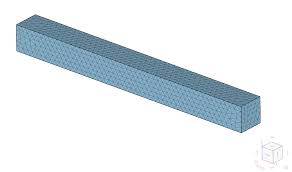
Fig 16: Straight Beam
Courtesy: simscale.com
Straight beams have a straight contour along their length. The majority of the structures are composed of straight beams.
17. Tapered Beam:
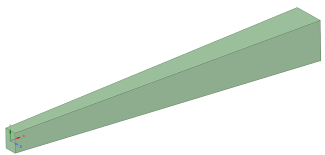
Fig 17: Tapered Beam
Courtesy: forum.ansys.com
Because of their excellent stiffness-to-mass ratio, tapered beams are widely used in structural applications. They have several advantages over prismatic beams, including increased shear bearing capacity, increased lateral stability, and reduced weight.
18. Curved Beam:
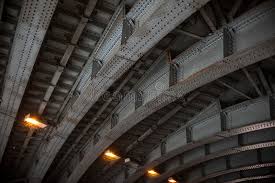
Fig 18: Curved Beam
Courtesy: dreamstime.com
Curved beams are those that have a curved shape or profile. It is commonly employed in the construction of circular or curved-shaped buildings.
E Based on Equilibrium Conditions:
19. Statically Determinate Beam:
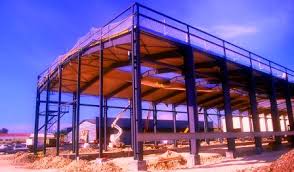
Fig 19: Statically Determinate Beam
Courtesy: structvile.com
Based on the basic equilibrium condition, the support reaction created in this beam is computed. The basic equilibrium position used as a beam is used to examine statically determinate beams. The number of unknown forces in a statically specified beam is equal to the number of equations in this case.
20. Statically Indeterminate Beam:
Equilibrium conditions are insufficient to solve reactions in a statically indeterminate beam. As a result, analyzing this sort of beam is more difficult than analyzing statically determinate beams.
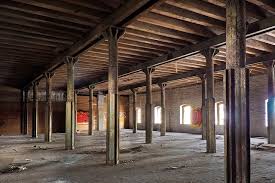
Fig 20: Statically Indeterminate Beam
Courtesy: aboutcivil.org
F. Based on Construction Methods:
21. Cast In-situ Concrete Beam:
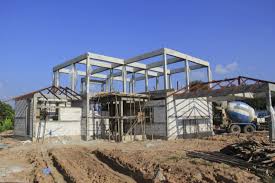
Fig 21: Cast In-situ Concrete Beam
Courtesy: civildigital.com
These are the beams that are cast and cured on-site. Formwork is placed in a specific size for the casting of the beam, and fresh concrete is poured into the forms, which are then compacted using various vibratory machinery.
22. Prestressed Concrete Beam:
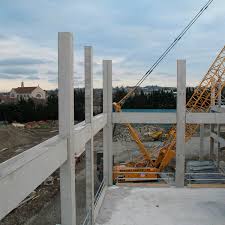
Fig 22: Cast In-situ Concrete Beam
Courtesy: civildigital.com
Stress or strain is imparted to this concrete beam before it is placed in place. Engineer-designed prestressed-concrete beams can span greater distances than reinforced-concrete beams. This type of beam is very thin and light.
23. Precast Concrete Beam:
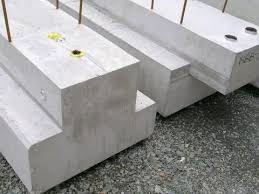
Fig 23: Precast Concrete Beam
Courtesy: civildigital.com
Precast beams are cast or created in a controlled environment away from the structure, and perfect conditions are provided to castings to assure the beam’s full strength. They’re made at facilities and cured with a high-quality check in a very controlled environment. After that, the precast beams are brought to the construction site to be used.
24. Lintel Beam:
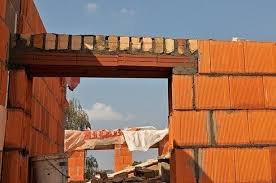
Fig 24: Lintel Beam
Courtesy: civilclick.com
It transfers the weight from the upper part to the sidewall it rests. One of the most important components of the beam is the lintel beam. On the top of the door, window, and ventilation frame, lintel beams are usually installed. Its major purpose is to limit the amount of force applied to the door and window frames.
Conclusion:
Different types of beams are utilized in buildings and constructions, and each one has a distinct purpose. The different beams are categorized based on the types of support they give, the loading conditions they face, the shape of their cross-sections, and the materials they make.
References:
1. Satheesh. (2019, October 3). 20+ Different Types Of Beams – List With Drawing [Civil Planets]. Civil Planets; civilplanets.com. https://civilplanets.com/types-of-beams/
2. Types of Beams in Constructions. (2021, September 5). 9To5Civil; 9to5civil.com. https://9to5civil.com/types-of-beams/
3. Mahajan, B. (2020, June 15). 25 Types Of Beam | What Is A Beam | Types Of Beams In Civil Engineering | Types Of Beam Pdf. Civiconcepts; civiconcepts.com. https://civiconcepts.com/blog/types-of-beam
4. 21 Types of Beams in Construction [PDF] – The Constructor. (2018, September 17). The Constructor; theconstructor.org. https://theconstructor.org/structural-engg/types-beams-construction/24684/
5. Mohdsuhel. (2021, April 3). Types of Beams Used in Construction. CivilMint.Com; civilmint.com. https://civilmint.com/types-of-beams-used-in-construction/
6. Sahu, A. (2020, March 7). Different types of Beam and its classification – Civil Gyan. Civil Gyan; www.civilgyan.com. https://www.civilgyan.com/different-types-of-beam-and-its-classification/
7. Types of beams used in buildings and structures – Constro Facilitator. (2021, July 24). Constro Facilitator; www.constrofacilitator.com. https://www.constrofacilitator.com/types-of-beams-used-in-buildings-and-structures/
If you have a query, you can ask a question here.


